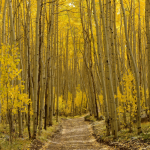
Forest Bathing Explained – The Klubb
“We often forget that we are nature—nature is not something separate from us—so when we say that we have lost our connection to nature, we’ve lost our connection to ourselves.”
Andy Goldworthy
On a recent episode of The Art of Being Well, host Dr. Will Cole sat down with Heather White, previous Executive Director of the Environmental Working Group (EWG) and the founder and CEO of One Green Thing to talk about the ancient practice of shirin-yoku or forest bathing.
What is forest bathing?
Forest bathing, also known as Shinrin-yoku, is a practice that involves taking leisurely walks in the forest and immersing oneself in nature. This concept originated from Japan in the 1980s and has become a popular wellness trend worldwide.
In essence, forest bathing is not just about being physically present in the forest but also about connecting with nature through all of one’s senses. It focuses on slowing down and being present in the moment, allowing individuals to reap several health benefits.
In recent years, forest bathing has gained recognition as an effective form of therapy for stress relief and improving overall well-being. This article will delve deeper into what forest bathing is and how it can positively impact our lives.
The Practice of Forest Bathing
In Japanese, the term Shinrin-yoku translates to “taking in the forest atmosphere” or “forest bathing.” This practice does not involve any rigorous physical activity; instead, it encourages individuals to slow down and be mindful of their surroundings while being in nature.
The goal is to engage all five senses – sight, hearing, smell, taste, and touch – to fully immerse oneself in the natural environment. This includes walking barefoot on the forest floor, listening to the sound of birds chirping, smelling the fresh scent of pine trees, tasting wild berries, and feeling the texture of tree bark.
Incorporating mindfulness techniques and deep breathing exercises while practicing forest bathing can further enhance its benefits. It allows individuals to be fully present and appreciate the beauty of nature, leading to a state of relaxation and calmness.
The Benefits of Forest Bathing
Studies have shown that forest bathing has numerous health benefits for both physical and mental well-being. Here are some ways this practice can positively impact our lives:
- Stress Relief: Spending time in nature has been proven to reduce stress levels and promote feelings of relaxation. This is due to the soothing sounds, sights, and smells that nature provides.
- Boosts Immune System: The natural essential oils released by trees, also known as phytoncides, have been found to boost our immune system. Inhaling these oils while forest bathing can help improve our body’s ability to fight off infections.
- Improves Mood: Being in nature can have a positive impact on our emotional state. Studies have found that forest bathing can help reduce anxiety and depression symptoms, leading to an overall improvement in mood.
- Increases Energy: Nature has a way of renewing our energy levels. Spending time outdoors, especially in green spaces like forests, can give us a natural boost of energy and improve our productivity.
- Enhances Creativity: Disconnecting from technology and immersing ourselves in nature can stimulate creativity and increase problem-solving abilities. This is because nature allows us to let go of distractions and focus on the present moment.
How to Practice Forest Bathing
In order to fully experience the benefits of forest bathing, it’s important to practice it mindfully. Here are some steps to follow when engaging in this practice:
- Find a peaceful and natural environment: This can be a forest, park, or even your own backyard.
- Disconnect from technology: Turn off your phone and other devices to fully disconnect from the outside world.
- Use all of your senses: As you walk through the forest, take notice of the sights, sounds, and smells around you. Use all of your senses to fully immerse yourself in nature.
- Go slow: Forest bathing is not a hike or exercise, it’s about slowing down and taking in your surroundings. Take small steps and pause frequently to observe the details of nature.
- Breathe deeply: Inhale the fresh air and let it fill your lungs. Pay attention to the sounds of nature as you exhale.
- Touch and interact with nature: Take a moment to touch the trees, leaves, or any other natural elements around you. This can help deepen your connection with nature.
- Reflect on your experience: After spending some time in nature, take a moment to reflect on how you feel. Notice any changes in your mood, energy level, or creativity.
- Practice regularly: The more often you engage in forest bathing, the greater the benefits will be. Aim to practice at least once a week for optimal results.
What are the benefits of forest bathing?
Forest Bathing has the potential to help us feel joyful, calm, and filled with contentment. Research has also shown that it has the potential to lower your heart rate, reduce depression, anxiety, and confusion, and decrease stress hormone levels.
Beginner tips for forest bathing:
- Go with an experienced hiker, friend, or guide
- Pick an easy walking trail
- Know before you go (study the flora and fauna in your neck of the woods)
- Carry plenty of water
- Wear protective clothing (and trail shoes or hiking boots)
- Don’t forget the sunscreen






